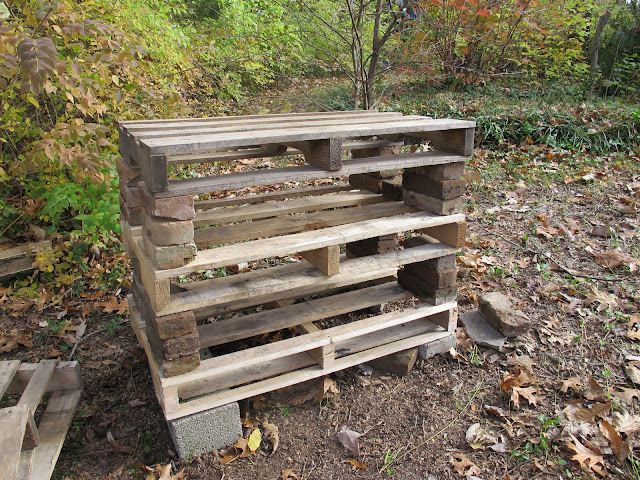Native bees, monarch butterflies and a host of other pollinators are in peril from habitat fragmentation and loss, the use of neonicotinoids and other pesticides and herbicides (by the agriculture/horticulture industry and home owners) and the introduction of non-native species are known causes of both wide-scale losses in biological diversity and pollinator declines.(More about neonicotinoids Everywhere you turn people are talking about pollinators post.)
Gardeners are already working hard to help pollinators!
We're planting smarter.
We love beautiful blooms in our gardens, but, we don't stop there... We choose plants that are attractive to the many pollinators that live in and visit our gardens.
We're planting lots of colorful flowers that are rich in nectar and pollen and are host plants for the offspring of butterflies, moths and other beneficial critters.
We're planting an array of flower shapes that appeal to hummingbirds, bees, moths, flies and butterflies.
We plan for bloom from late spring (native ephemerals) to early winter (witch hazels).
We plants native trees and shrubs because we know they are host plants for hundreds of important critters.
We provide nesting spaces for bees and other critters.
We accept that plants are beautiful even if chewed on by critters and we promise to never, ever, ever, ever use pesticides and herbicides in our gardens.
Dear nursery owners and managers, what are you doing to help gardeners help pollinators?
Are your plants pretreated with neonicotinoids?
If you don't know the answer to that question you should find out, because we cannot and will not buy plants that can harm bees and other beneficial critters!
If you do know the answer, then you need to let us know. Post signs near neonicotinoid free bee friendly plants. Inform your sales people, because smart gardeners ask questions and we expect honest answers.
It's the professional and responsible thing to do.
Thanks,
Gail
In case you want to read earlier pollinator posts~
Now Is The Time To Bee-gin Thinking About Bees ( here)
This Is The Place To Bee ( here)
If You Could Plant Only One Plant In Your Garden~Don't (here)
Must Bee The Season of The Witch (here)
Go Bare In Your Garden (here)
We can't All Be Pretty Pollinators (here)
Eye, Eye Skipper, Big Eyed Pollinators (here)
What's In Your Garden (here)
Royalty In The Garden~Monarch Butterfly (here)
Carpenter Bees (here)
Got Wildflowers?(here)
It's Spring and A Gardener's Thoughts Are On Pollinators (here)
The Wildflower and The Bee (here)
A Few Good Reasons To Plant Milkweed (here)
Got Shade? You Can Have Pollinators ( (here)
A Pollinator friendly Shrub (here)
Big Goings On at C and L (here)
Where Have All My Pollinators Gone (here)
Other bee posts you might want to read~
Count Yourself Lucky To Have Hover flies ( here)
Bumblebee Hotel (here)
Still Taking Care Of Bzzness (here)
My Sweet Embraceable You (here)
Gail Eichelberger is a gardener and therapist in Middle Tennessee. She loves wildflowers and native plants and thoroughly enjoys writing about the ones she grows at Clay and Limestone. She reminds all that the words and images are the property of the author and cannot be used without written permission.























































